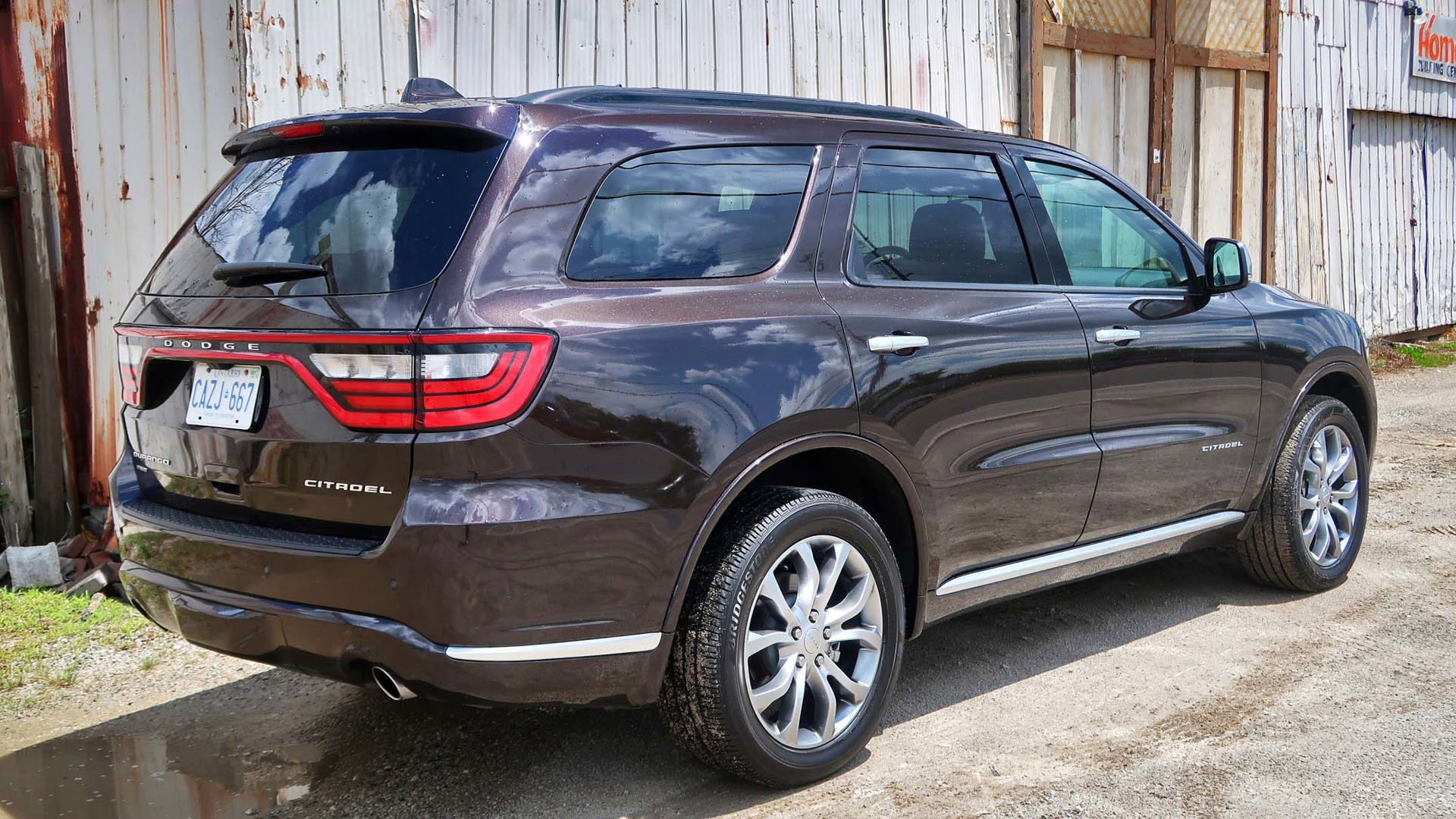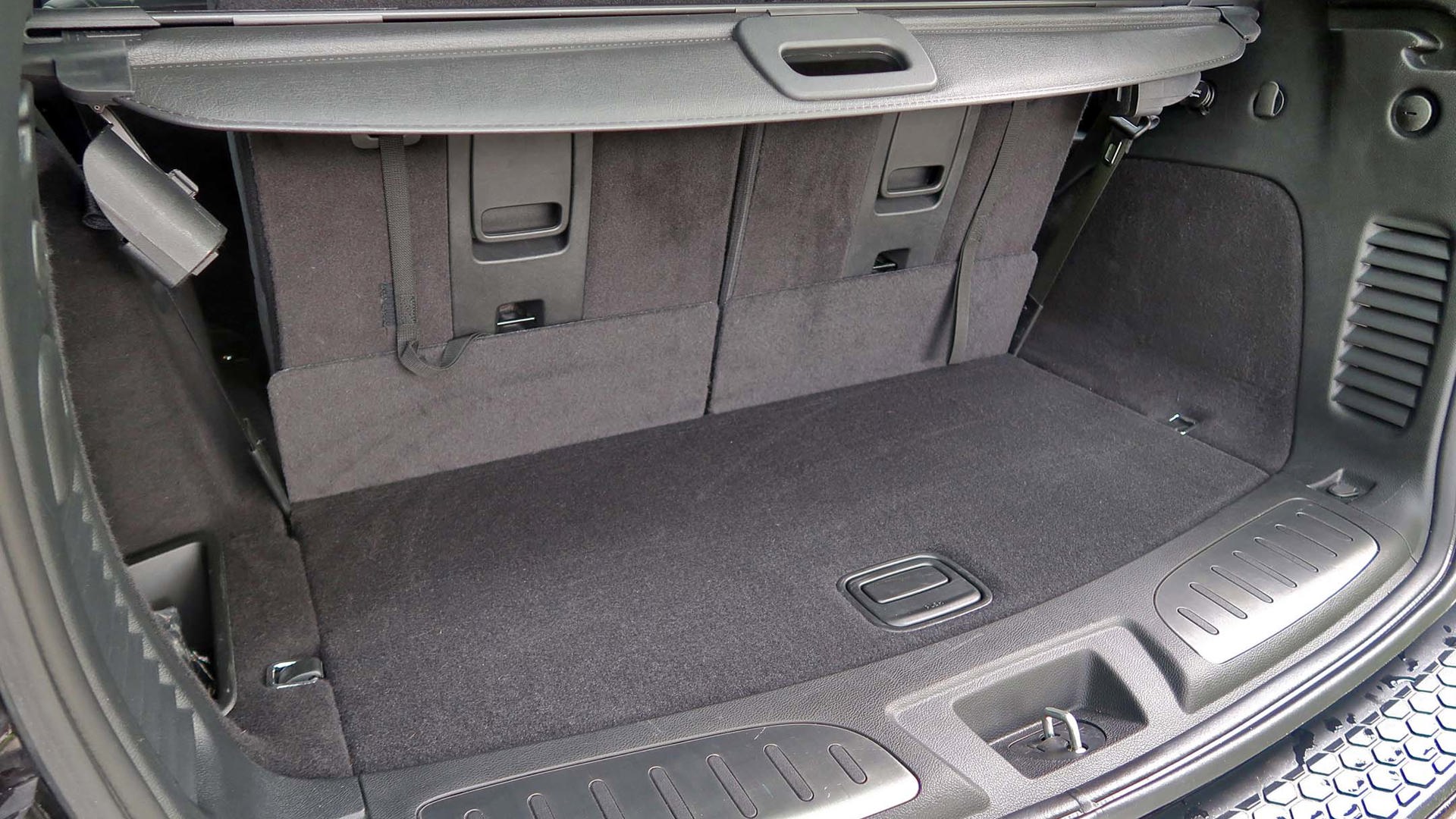 AutoTrader SCORE
AutoTrader SCORE
-
STYLING8/10
-
Safety8/10
-
PRACTICALITY7/10
-
USER-FRIENDLINESS7/10
-
FEATURES7/10
-
POWER9/10
-
COMFORT8/10
-
DRIVING FEEL8/10
-
FUEL ECONOMY6/10
-
VALUE6/10
You have to hand it to Chrysler: the company knows how to market itself. Thanks to a brilliant ad campaign some years back, just about everybody knows that the Hemi is Dodge’s big deal, even if most of them might not actually know what a Hemi is.
The Durango will tow as much as some trucks, and can carry more people.
Overall, it’s a strong, smooth, and pretty much bulletproof V8 (the name refers to the hemispherical shape of the combustion chambers; other automakers have used the design, but Chrysler trademarked the name). And it’s a $2,400 option on my tester, the 2017 Dodge Durango Citadel.
The largest of Dodge’s crossover/sport-utes, the Durango shares its platform with Jeep’s Grand Cherokee, but has standard three-row seating to the Jeep’s two. Both the Dodge and Jeep start with a 3.6L V6 and are available with the 5.7L Hemi V8. The Durango doesn’t offer the Jeep’s 3.0L diesel, but while Jeep has recently been alone in offering the 475 horsepower SRT version, Durango will match it with one of its own for 2018.
I’ve driven the 3.6L V6, which puts out 293 horsepower and 260 lb-ft of torque. Acceleration is of course much tamer than with the V8, but it’s still a good choice if you don’t want to send your Durango’s price tag flying with the add-on Hemi. The base SXT starts at $44,195 and then moves to the GT, a new trim line that replaces the Limited, at $49,195. The R/T comes only with the V8 at $56,495, but the V6-powered Citadel pours on enough luxury trim that it starts at $57,195. You can get rear-wheel-only models in the US, but in Canada, all Durango trims come strictly with full-time all-wheel drive.
In addition to the Hemi, my tester was goosed with a number of options, including second-row captain’s chairs for six- instead of seven-passenger seating, a suite of electronic safety nannies, and a dual-screen DVD system, bringing mine to $66,665 before freight and taxes.
The Durango was originally developed as a body-on-frame truck, based on the defunct Dakota mid-size pickup, but has long since morphed into a unibody. As does most of its competition, the Durango provides a smooth ride and handles more like a really big car, albeit it one that weighs almost two and a half tonnes. That weight is mostly to blame for a rated fuel economy that hits a thirsty high of 16.6 L/100 km in city driving. I did much better, ending my week with it at 13.2 L/100 km, just under the official rating of 14.0 for city/highway combined. Under light load, the V8 seamlessly deactivates half its cylinders for better mileage.
Making 360 horsepower and 390 lb-ft of torque, the V8 is bolted to an eight-speed automatic that does a very good job of keeping it in the sweet spot and without hunting for the right cog. The all-wheel system powers the front and rear axles all the time, and includes a low range if extra oomph is needed in heavier-duty footing. Towing capacity maxes out at 6,200 lb (2,812 kg) with the V6, while the V8 can pull up to 7,200 lb (3,265 kg), pretty much ensuring you’ll be able to get the summer toys up to the cottage.
The cabin design is simple, and the soft-textured material on the dash just barely prevents that wide, plain surface from looking underwhelming and dated. The standard five-inch centre screens upgrades to an 8.4-inch on the R/T and Citadel. Most of the controls are equally simple to operate, although I’ve always preferred temperature dials to my tester’s tap-up-or-down switches, and you must hit two screen icons before you can adjust the Citadel’s heated and ventilated seats. Heated chairs can quickly become distracting if they get too hot, and I’ve always preferred hard buttons for their operation. There’s also my new very-favourite feature, a heated steering wheel.
Those hot-and-cool seats are very comfortable, as are the sculpted chairs in behind them. My second-row seats were separated by an optional console, and when you fold the seats in half to increase storage space, you can adjust the console’s lid so it’s the same height as the seats.
Third-row SUV seats always come with some compromises, but the Durango’s are relatively roomy, and the floor isn’t so high that you sit with your chin on your knees. They’re also full-width to make them viable for adults, although you can’t fit in a third person, and the Durango tops out at a maximum of seven seats when ordered with a second-row bench. The rear doors open fairly wide for access to the back row, although there’s not much of a sill for putting your foot when hopping in.
All of the second- and third-row seats fold flat, but like most three-rows, cargo space is limited when that final row is up. Keep that in mind if you’re picking up a full house at the airport: your passengers will fit, but don’t count on stuffing in all their luggage as well.
My tester had several add-ons, and with the company’s propensity for offering options, it’s easy to smack the final price up into the bleachers. Some of them are best left as owner’s choice, since not everyone needs or wants a rear-seat entertainment system ($2,150) or a Platinum Edition trim package ($1,095). But I found a few things I would have expected to be thrown in for the Citadel’s $57,195 base price, such as the blind-spot monitoring that’s only available as part of a $1,450 safety package.
As with any people-mover, its usefulness will depend on what you need it to do. For strictly handling crowds, it’s almost impossible to do better than a minivan, with their sliding doors, lower floor and easily accessible rear seats. But for those who need something with more capability, the Durango will tow as much as some trucks, and can carry more people.
It’s a big, smooth-riding, easy-driving ute, and with the Hemi, has lots of power to spare.
| Engine Displacement | 5.7L |
|---|---|
| Engine Cylinders | V8 |
| Peak Horsepower | 360 hp @ 5,150 rpm |
| Peak Torque | 390 lb-ft @ 4,250 rpm |
| Fuel Economy | 16.6/10.7/14.0 L/100 km city/hwy/cmb |
| Cargo Space | 487 L/1,350 L, 3rd row down/2,392 L, rear rows down |
| Model Tested | 2017 Dodge Durango Citadel |
| Base Price | $57,195 |
| A/C Tax | $100 |
| Destination Fee | $1,795 |
| Price as Tested | $68,560 |
|
Optional Equipment
$9,470 – 5.7L Hemi V8 $2,400; Platinum appearance package with 20-inch wheels $1,095; Technology Group (lane-keeping assist, forward collision warning with active braking, adaptive cruise control, advanced brake assist, blind spot monitoring with cross-traffic alert) $1,450; Rear DVD entertainment system $2,150; Trailer Tow Group with rear load-levelling suspension $825; 2nd-row captain’s chairs $600; 2nd-row console $250; Navigation $700
|
|















































